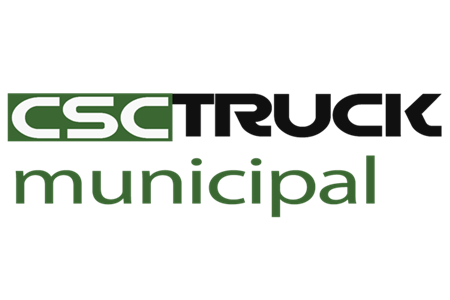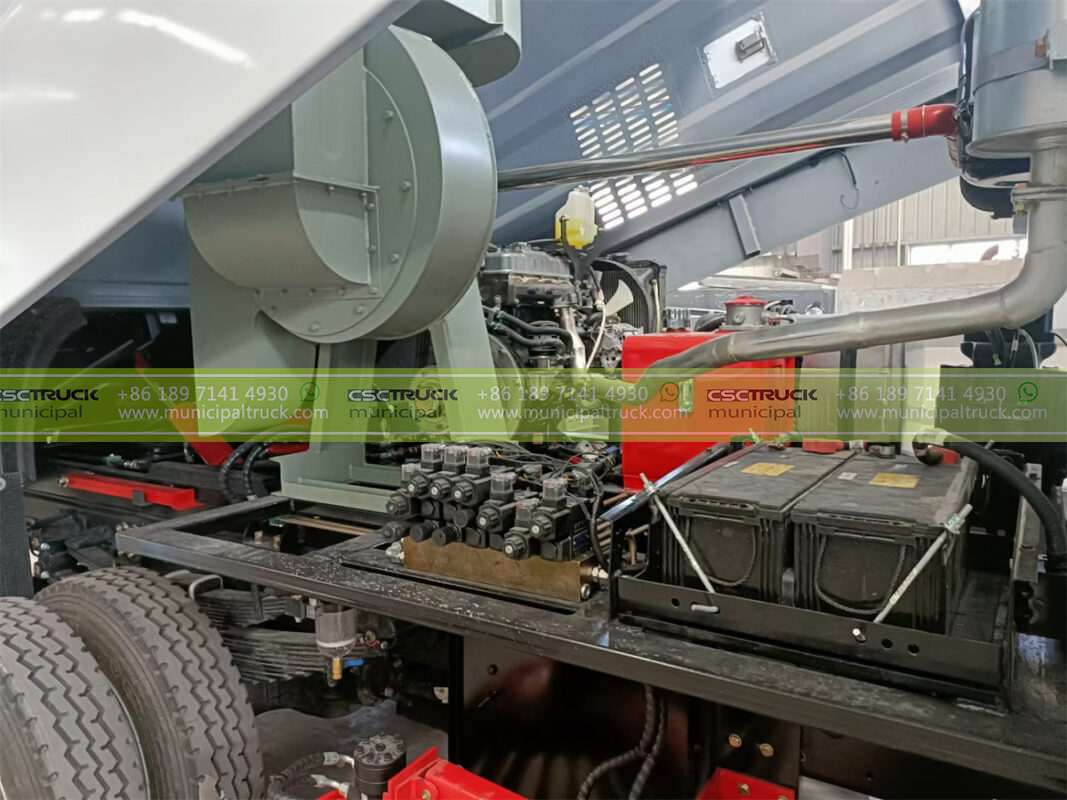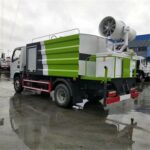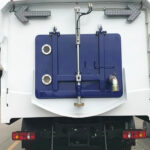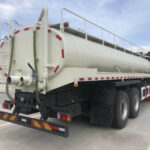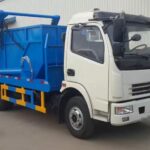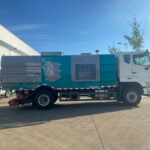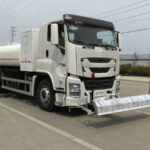As the unrelenting sun bakes the cracked earth of Phoenix, Dubai, and Ulaanbaatar, a familiar haze rises—a billion minuscule particles of silica, tire rubber, and industrial residue swirling into the lungs of millions. In these hyper-arid environments, where annual rainfall dips below 150mm and humidity often languishes in single digits, street sweeper trucks transform from routine maintenance tools into frontline defenders against atmospheric chaos. Modern iterations are no longer mere brooms on wheels; they are integrated dust-suppression ecosystems engineered to combat a problem costing arid megacities upwards of $2.3 billion annually in healthcare, infrastructure erosion, and productivity losses.
The Invisible Foe: Understanding Arid-Region Dust Dynamics
Arid urban dust constitutes a complex, hazardous cocktail far exceeding simple soil displacement:
- PM2.5 Proliferation: Wind erosion in Las Vegas liberates 18,000 metric tons of inhalable particulates monthly, with construction sites contributing 37% of ultra-fine metallic particles
- Biological Contaminants: Dried sewage microdroplets and fungal spores (e.g., Coccidioides immitis) in Tucson’s dust clouds cause valley fever outbreaks spiking 300% post-sandstorms
- Corrosive Chemistry: Alkaline dust (pH 9.2) in Kuwait City accelerates steel structure corrosion by 0.8mm annually—tripling maintenance costs for bridges and power transformers
- Thermal Amplification: Dust layers on asphalt increase urban heat island intensity by 4°C, triggering 22% higher HVAC energy demand in Riyadh’s commercial districts
Traditional sweeping exacerbates these issues. Dry mechanical brooms loft 68% of captured dust back into the air column, while uncontrolled water spraying creates temporary mud that desiccates into harder, more erodible crusts.
Engineering the Solution: Next-Gen Sweeper Architecture
Contemporary sweeper truck designs integrate four synergistic subsystems to overcome arid challenges:
Aerodynamic Containment
Negative-pressure vortex chambers:
- Generate inward airflow velocities of 45 m/s at the brush head
- Capture 99.3% of PM10 particles before atmospheric release
- Reduce fugitive dust emissions by 78% compared to conventional sweepers
Dubai’s SandShield SS-7 units demonstrated containment efficiency even during 55 km/h shamal winds, maintaining air quality within WHO thresholds during operation.
Electrostatic Precipitation
Charged collection plates:
- Impart 12kV negative charge to dust particles
- Attract positively charged PM2.5 onto wet-adhesive belts
- Achieve 94% capture of particles down to 0.8 microns
This innovation proved critical in reducing Santiago’s pediatric asthma admissions by 31% during the 2024 dry season.
Variable Geometry Brushing
Telemetric bristle control:
- Auto-adjust brush pressure based on surface texture (asphalt vs. pavers)
- Modulate rotational speed (80-250 RPM) relative to debris load
- Prevent aggregate dislodgment on aged road surfaces
Phoenix documented 42% fewer pavement markings damaged after implementing adaptive brushing.
The Hydro-Smart Revolution: Dust Control Without Water Waste
Arid operations demand radical water efficiency, achieved through precision fluidics:
Nano-Mist Delivery
Ultrasonic atomizers:
- Generate 18-micron droplets that encapsulate dust particles
- Reduce water consumption to 0.7 liters per kilometer swept
- Maintain surface humidity below evaporation threshold for 47 minutes
Windhoek’s fleet slashed water usage from 3,500 liters daily to just 290 liters while improving suppression efficacy.
Polymer Enhanced Suppression
Shear-thinning fluid additives:
- Form temporary dust-aggregating matrices upon impact
- Biodegrade within 72 hours without soil residue
- Increase surface cohesion by 300% after application
Tests in Addis Ababa showed polymer-treated zones maintained 80% lower dust resuspension for 5 days post-sweeping.
Integrated Water Sprinkler Truck Coordination
Pre-sweeping surface conditioning:
- Deploy moisture calibration 90 minutes before sweeping
- Achieve optimal 11% surface dampness for dust adhesion
- Enable synchronized sweeping during low-wind windows
This choreography allowed Lima to sweep during daylight instead of nocturnal operations, reducing accident rates by 19%.
Intelligence in the Dust Storm: AI-Driven Deployment
Modern sweepers function as data-collecting sentinels:
| Sensor Array | Data Captured | Operational Optimization |
|---|---|---|
| LIDAR Surface Mapping | Micro-topography (0.2mm res) | Adjust brush height to avoid surface damage |
| Particulate Monitors | Real-time PM1.0/2.5/10 levels | Trigger emergency suppression protocols |
| Traffic Flow Analysis | Vehicle spacing patterns | Schedule routes during congestion minima |
| Soil Moisture Probes | Subsurface hydrology (1m depth) | Predict dust eruption risk zones |
Marrakech’s AI integration reduced unnecessary sweeping mileage by 53% while increasing targeted hotspot coverage by 210%.
Beyond Hygiene: The Economic Resonance of Controlled Dust
Strategic sweeping generates compound municipal dividends:
- Solar Infrastructure Protection: Regular removal of light-blocking dust from photovoltaic farms near Cairo boosted energy yield by 11.7 MW annually
- Transport Efficiency: Reduced dust accumulation on rail tracks decreased Delhi Metro wheel flange wear by 28%, saving $3.2 million in parts replacement
- Tourism Economics: Marrakech’s medina visibility improvements extended average visitor stay by 1.7 days through reduced respiratory irritation
- Agricultural Salvage: Precision orchard-edge sweeping in California’s Central Valley cut crop contamination by 39%, preserving $840 million in export value
The Symbiotic Fleet: Integrated Municipal Response
True dust mastery requires orchestration beyond sweepers:
Preventive Surface Treatment
Coordinated water sprinkler truck deployment:
- Apply soil stabilizers (guar gum derivatives) before wind events
- Maintain electrostatic charge on road surfaces
- Create temporary dust barriers during construction surges
Kuwait City’s pre-storm stabilization reduced post-event cleanup costs by $17,000 per square kilometer.
Construction Corridor Management
Dynamic routing algorithms:
- Sync sweeper movements with earthmoving schedules
- Enforce real-time compliance via IoT dust monitors
- Auto-invoice developers for supplementary cleaning
This system recovered 92% of auxiliary cleaning costs in Dubai’s Palm Jumeirah expansion.
Health Emergency Protocols
Epidemiological integration:
- Redirect sweepers during asthma hospitalization spikes
- Deploy HEPA-filtered cabin units near hospitals
- Correlate sweeping intensity with pollen/particulate forecasts
Santiago’s health-linked sweeper deployment reduced emergency inhaler prescriptions by 17,000 units annually.
The Arid Metropolis Rebalanced
As dawn breaks over the dust-harried cities of the sunbelt, the low hum of municipal truck fleets signals not mere cleaning, but atmospheric reengineering. These technologically advanced sweeper truck units, working in concert with their water sprinkler truck counterparts, have evolved into climate adaptation platforms—mediating the fragile equilibrium between urban expansion and desert ecology. Their rotating brushes now trace algorithms across our pavements, each revolution binding dust particles into manageable aggregates, each pass restoring breathable air without squandering precious aquifers. In the calibrated whisper of their electrostatic collectors and the precise mist of their nano-sprayers, arid cities discover a new paradigm: one where human habitation no longer means perpetual atmospheric warfare, but rather, a sustainable coexistence with the ancient dust from which our civilizations emerged.
